When it comes to writing, things may feel a bit intimidating.
However, everything is not as complicated as it seems. Writing is simple when you follow a carefully planned writing process.
Good material can’t be produced without in-depth topic research, info structuring, and a thorough revision. These are the essential elements of a writing process.
Let’s reveal a writing process concept, starting from the definition and ending with the key steps to creating a perfect piece of content.
What Is a Writing Process?
Before going right into the woods, it would be reasonable to understand the meaning of the term ‘writing process.’
In fact, the writing process goes far beyond writing itself. Generally, it’s a set of significant planning and operational steps that you should go through to produce flawless text.
When you approach writing as a process, you may be able to navigate your ideas and avoid the widespread obstacle among all creators – writer’s block (inability to generate new work associated with a creative slowdown). With a complete understanding and sticking to the writing process, you maintain the right work ethic, set your focus, and create exceptional pieces that you won’t be ashamed of showing off much more easily.
Basically, we can define the following writing process steps (common for producing various types of content):
- Topic research & SEO research (optionally),
- Planning & creation of a brief outline,
- Writing the first draft,
- Revision and improvement,
- Editing & proofreading,
- Final approval.
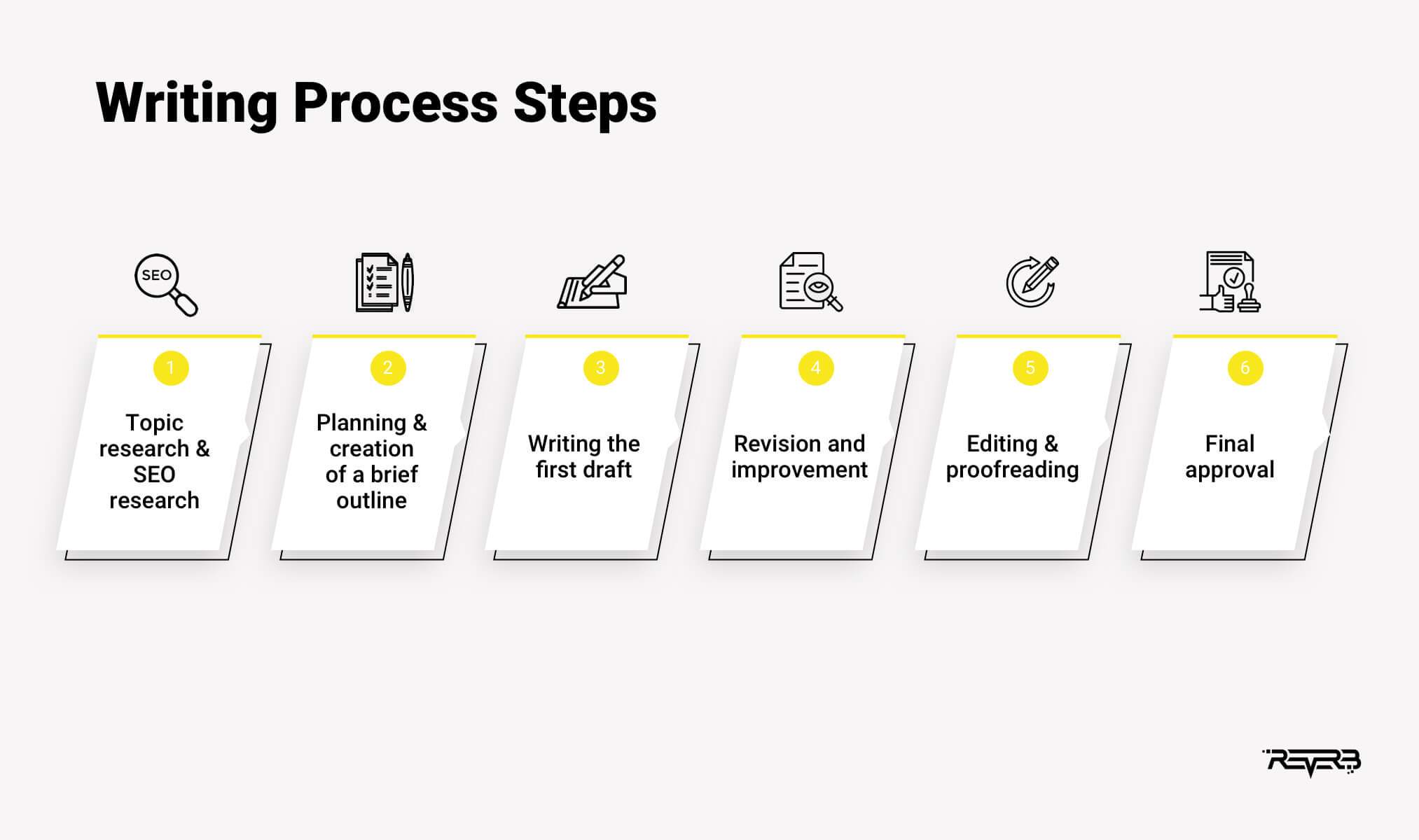
Let’s talk about each step in more detail. I’ll also share with you an arsenal of must-have digital tools for writers that will greatly simplify, optimize, and improve your workflow and quality of work.
The Ultimate Step-by-Step Writing Process
Step #1. Topic research & SEO research (optionally)
How are you supposed to start writing without choosing the topic and studying it from A to Z? Topic research is the first and the most crucial stage of producing any piece of content. It might also be called prewriting.
At this stage, you should dedicate some time to thinking over your project and brainstorming a batch of ideas that you may reveal further. Research a target market and audience that you’re going to write for. What topics would your customers be excited to learn about?
Some effective idea-generating practices include brainstorming with colleagues and friends, figure storming, brain netting aka online brainstorming, or simply setting an online timer and focusing on extracting creative ideas from your mind.
However, if you are still struggling to come up with some good ideas for your article, try using such tools as Exploding Topics or Buzzsumo to easily identify the trendiest subjects before everyone else does. Exploding Topics saves you time by displaying the popular keyword-containing topics by categories, while Buffer shows the most shared content across the web.
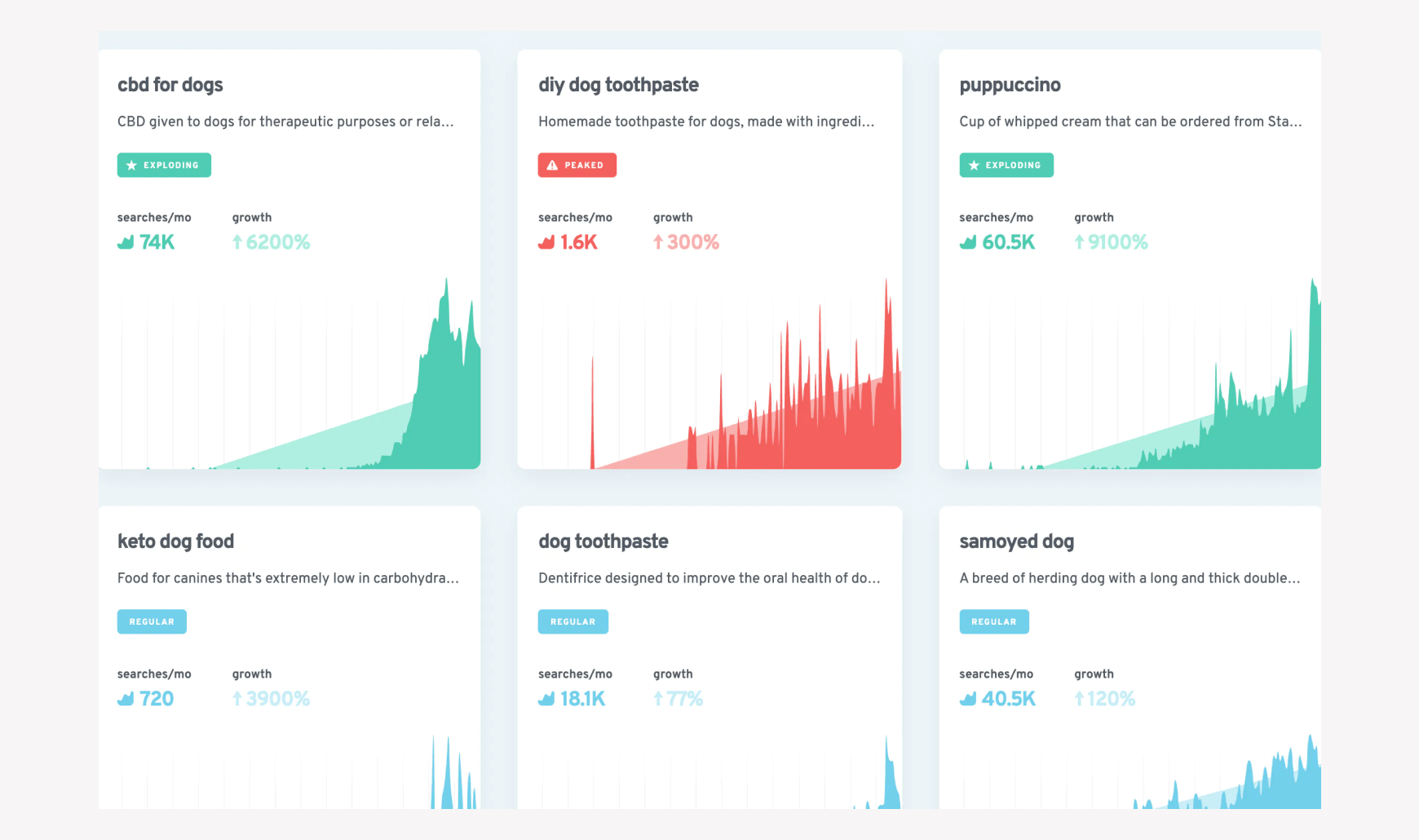
Exploding Topics dashboard
Write down, evaluate all the ideas, and choose the most suitable ones so you can move on to the next step.
SEO research
In case you are trying to hunt the organic traffic from search engines with your text, SEO research is an integral part of the writing process. You have to find out what queries people use when searching for your products, services, or expertise on the web.
For efficient keyword research, you can use special SEO tools such as Ahrefs, Ubersuggest, or Semrush. Just type in the primary keyword related to the chosen topic and get a batch of additional keyword ideas. Focus on the long-tail keywords that balance between a sufficient Search Volume and acceptable Keyword Difficulty.

Ahrefs Keyword Explorer tool
With Ahrefs, you can also advance your SEO research and assess the quality of backlinks to your site, page rankings, and check your website’s SEO health via site audit feature.
How about getting a batch of popular keyword ideas from Google suggestions? You only need to enter a word, phrase, or URL related to the topic and in response, Google will offer you a list of relative queries in the footnote on a search results page.
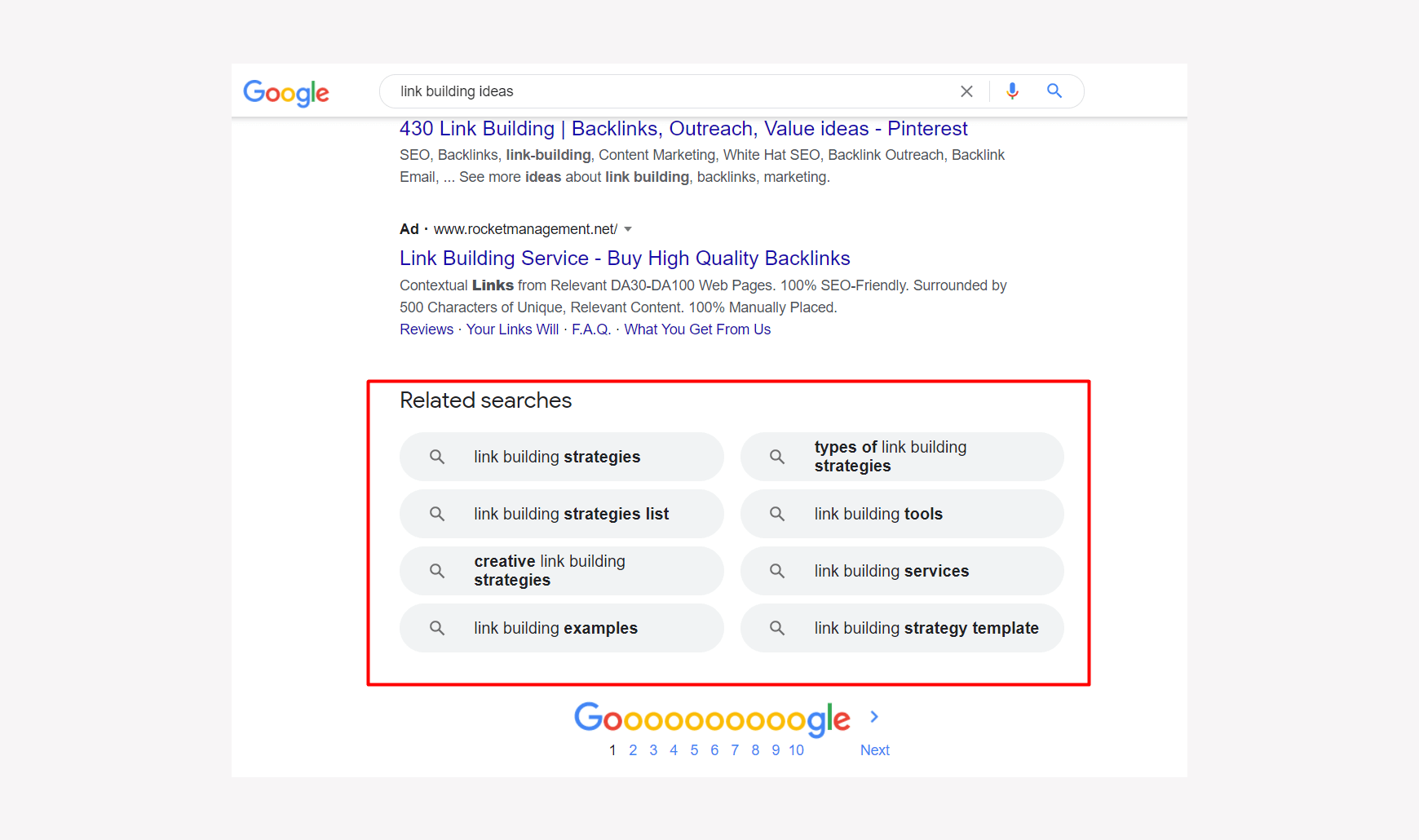
Google Suggest example
You can also begin entering a keyword into the Google search field to use Google autocomplete. Google will automatically provide a list of suggestions based on the typed in queries.
By inserting the right keywords into the text, you ensure that your content goes viral and is easily found by target users. Many website owners make a critical mistake neglecting the importance of preliminary SEO research. Consequently, 90.63% of pages are not getting any traffic from Google and other search engines.
Step #2. Planning & creation of a brief outline
The second step which is especially important for a blog writing process is planning the structure of an article and composing a brief outline. In this way, you’ll get a complete understanding of what info you need to include and what the key points of your whole text will be. Thus, you won’t mess everything up.
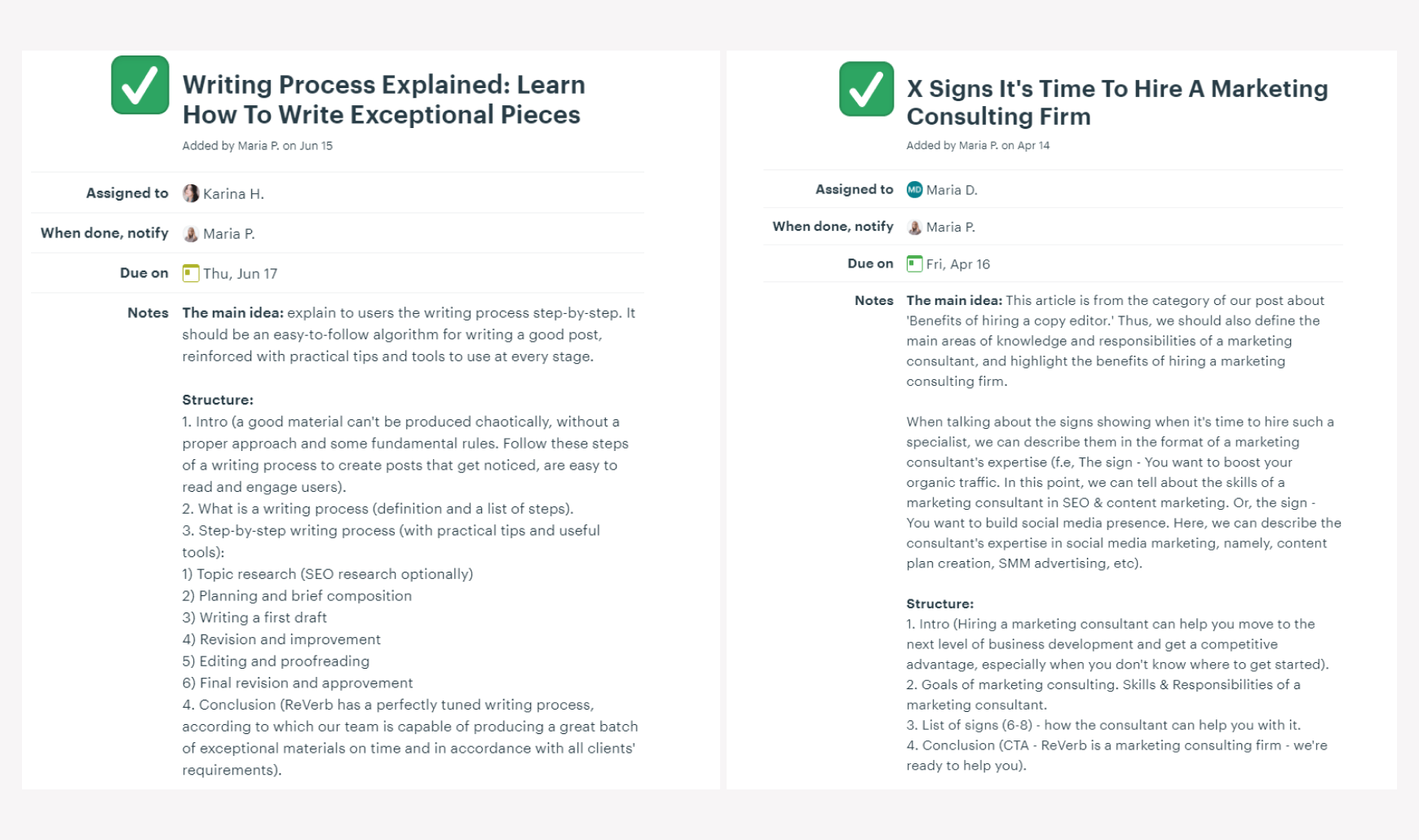
Example of brief outlines
It’s also much easier to write when you divide the entire process into smaller writing steps based on a structured outline. That’s how you focus on the main idea of the post rather than filling the blank space with excessive info dump and statements that hardly relate to the topic.
Make your text structure apparent at a glance by using bullet points or numbers. Even if you’re writing a short text without subheaders, it’s a good idea to summarize what you’ll cover in each paragraph.
Set yourself a task to reveal the topic in as much detail as possible and define whether the presented information answers all the potential questions. Once you logically lay out everything in the well-structured detailed plan, you are free to start describing each point. And it takes us to the third step.
Step #3. Writing the first draft
All the stages of a writing process probably won’t matter that much if you don’t get the writing really done (apply these super-efficient copywriting techniques to succeed). When you have completed the planning step, it’s time to start putting all the necessary information according to the brief down and composing the first draft.
Remember, the first draft doesn’t have to be perfect. The main purpose of this stage is to organize the info on paper without getting stuck on editing every single word right away.
Creating the first draft provides you with great freedom to evaluate the viability of your outline. At the same time, you use it as a framework and come up with additional ideas on the way. You can smoothly move on from one point to another by linking your main ideas with the transition words and phrases. Consider this step to be similar to a free writing exercise, but with a more structured approach.
The last thing to keep in mind: set a first draft deadline that allows you enough time to rewrite, edit, and proofread before you hit the final deadline. If you prefer to optimize your work with task management digital solutions, then try Monday.com. This service enables single individuals and teams to graphically arrange a writing process in a simple and clear manner.
With its help, you will be able to split a complex task into subtasks and update their progress. In such a way, you will perfectly meet the deadlines if working on several projects at the same time.
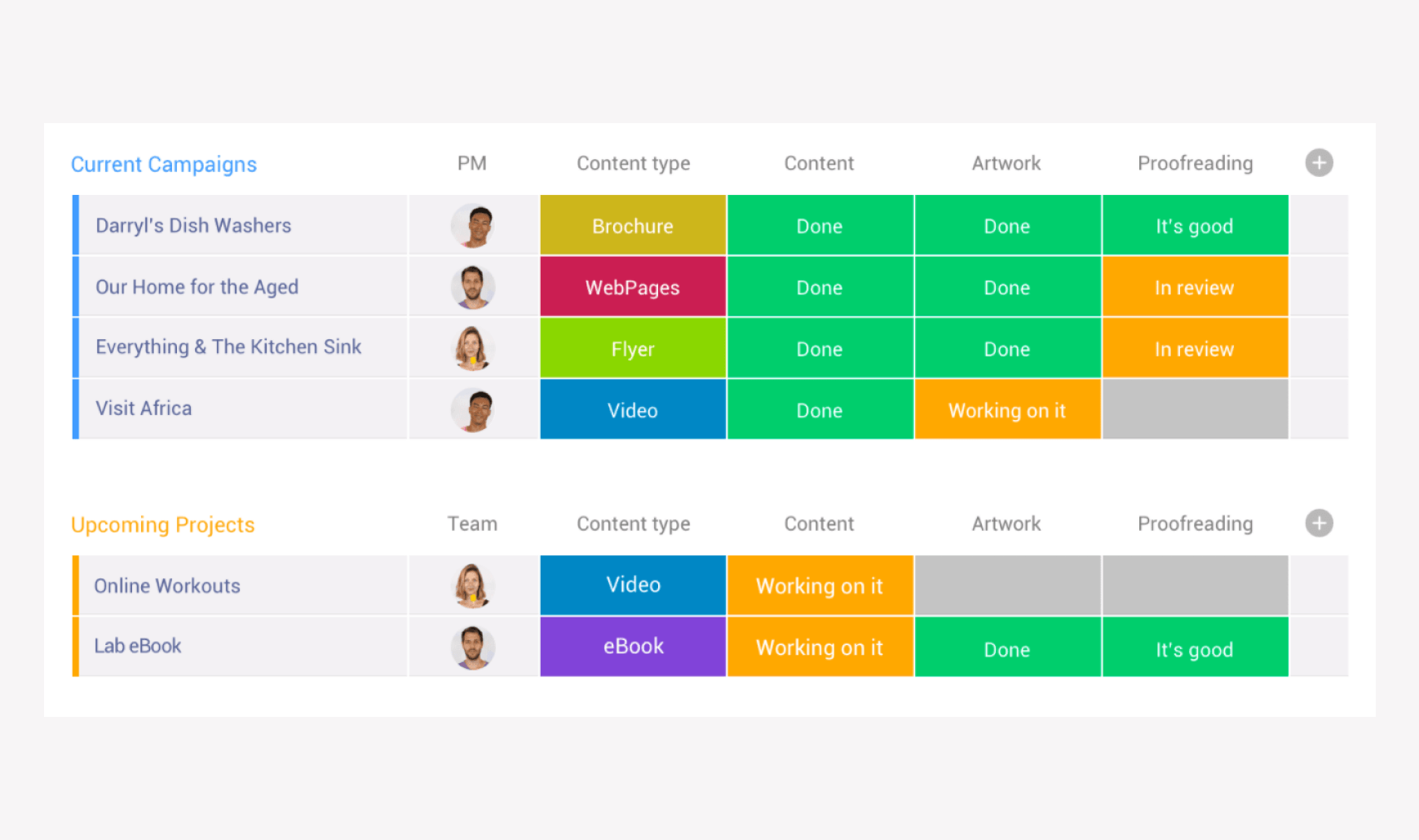
Monday.com dashboard
Step #4. Revision and improvement
When you have a first draft ready, you will see how easy it is now to go through it and detect the weak parts that need fixes and improvements. Revision entails making structural modifications and reformulating already existing ideas to make the text sound more engaging and in-depth.
When bringing your text through a revision phase, use these questions to help yourself:
- Does the content reveal the topic in full? Should you include extra information to back up your points?
- Would it sound better if you rearranged the material in a different way? Are the points linked and coherent, or do they appear to be disjointed?
- Could the writing of a certain paragraph be better? Do you have a more impacting point B instead of point A?
- Did you go over your word limit? Are there any phrases or paragraphs that you may omit?
Once you’ve determined where adjustments are appropriate, make the improvements and see how the full picture looks now.
The areas of text improvement may include:
- Making modifications to some parts
- Rearranging the sentences
- Removing or replacing certain parts
- Adding new paragraphs that might be relevant
Do your best to enhance the text from a reader’s perspective.
Step #5. Editing & proofreading
Whether you are tuning into the blog writing process or in any other public-oriented content writing, copy editing is super important. This procedure assures clear, comprehensive, and mistake-free editing at different levels: line-by-line, paragraph-by-paragraph, and full text. The longer your text is, the more detailed your editing has to be.
Examine where your message may be expressed more effectively or in fewer words, and keep an eye out for typical sentence structure errors like run-on sentences and sentence fragments.
During the proofreading stage, look out for:
- Repetitions or redundancy of words and phrases
- Grammatical and spelling errors
- Punctuation problems
- Unnatural or ambiguous phrasing
- Inconsistent and inappropriate tone
In academic writing, there are numerous issues and several standards you might select from. As an example:
- Whether or not to use a serial comma
- Preference of American or British spelling and punctuation
- Using digits instead of words for numbers
- The manner capitalizing titles and headers, etc
You’re free to choose the standards on your own unless there are particular instructions provided. Make sure you stick to one pattern throughout the whole writing process.
For better results, you can also try out some of the automated editing tools such as Grammarly, Hemingway Editor, etc.
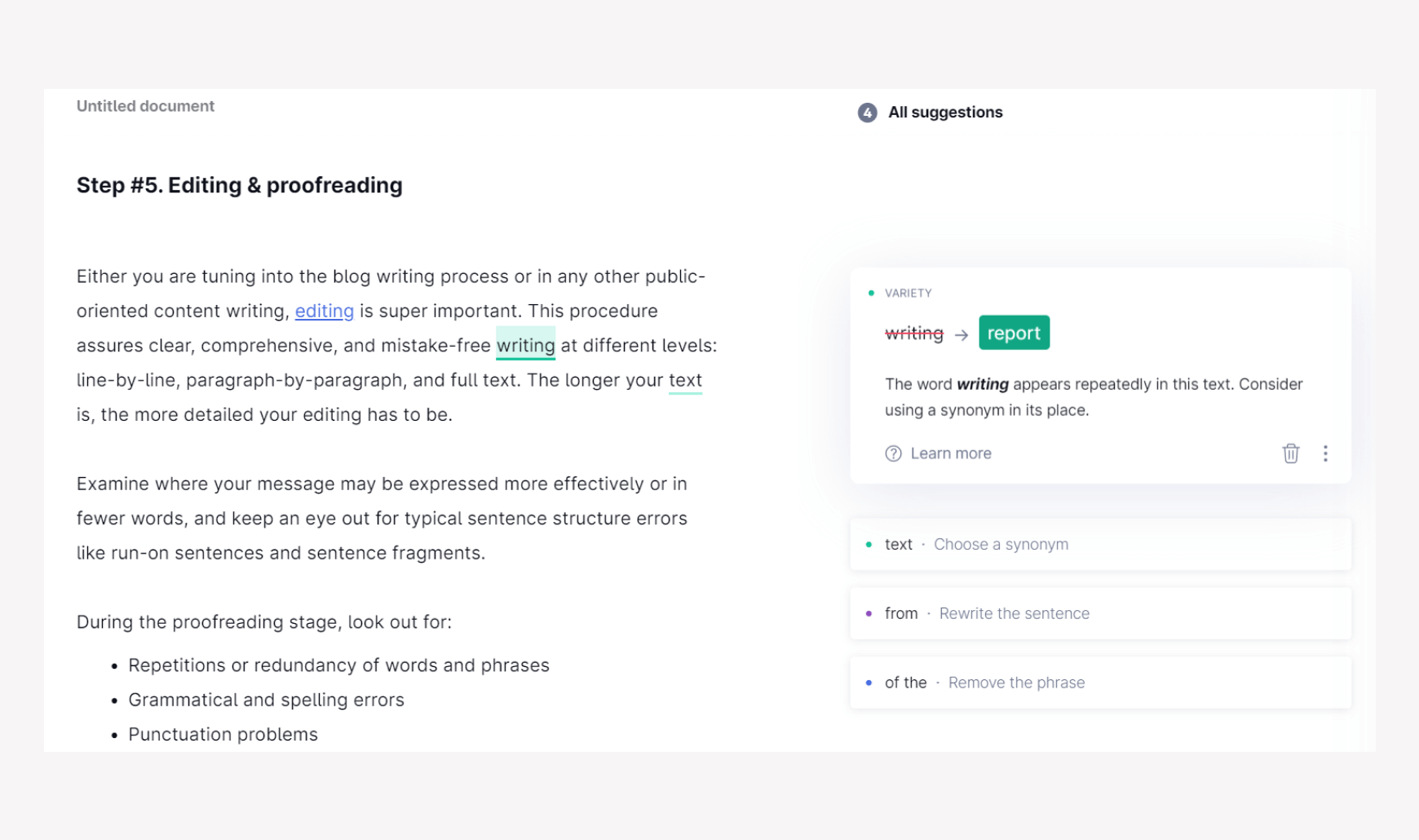
Grammarly dashboard
It’s also a great practice to ask someone else to edit your work or assign the text to a professional copy editor. That’s how some mistakes that you overlooked during your review can be detected.
Step #6. Final revision and approvement
Now when you are done with completing and editing your draft, it’s time to give it a final revision and polish it to perfection. Apply all of the changes you made throughout the editing phase into the final doc.
Think about readers’ experience at this stage. Read a finished text out loud to check the flow and see if it sounds well in your head as if it’s read by your customers. Sounds good? Congratulations! You created an exceptional piece of content.
Conclusion
Writing is one of those tasks that looks like a no-brainer at first sight but actually requires a lot of attention and dedication. With these six simple steps, you can achieve a highly efficient writing process seamlessly.
ReVerb has a perfectly tuned writing process, according to which our content team is capable of producing a great batch of high-quality materials on time and meeting all clients’ requirements. So, if you better trust the writing process to professionals, feel free to contact us and request your first article!












